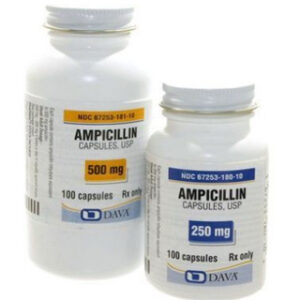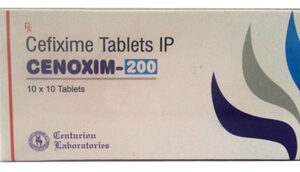Cefixime Explained
Cefixime is a third-generation cephalosporin antibiotic designed for oral administration. Known for its extended-spectrum activity, this medication excels in targeting a range of bacteria responsible for numerous common infections. Cefixime functions by disrupting bacterial cell wall synthesis, ultimately neutralizing the pathogens and providing relief from bacterial infections.
Uses and Indications
Healthcare providers prescribe Cefixime for managing various bacterial infections, including those affecting the respiratory tract, urinary tract, and ears, among others. Explicitly, it is efficacious against pharyngitis, tonsillitis, acute bronchitis, uncomplicated urinary tract infections, and gonorrhea. Furthermore, otitis media, a children’s ear infection, can also be effectively treated with Cefixime. Its broad scope encompasses many strains of bacteria, offering a robust defense against infectious diseases.
Dosage & Administration
Dosage particulars for Cefixime must be individualized according to the type of infection and its severity. Typically, adults may receive 400 mg per day, which can be consumed as a single dose or split into two 200 mg doses. For children, dose determination is usually based on body weight, and the medication often comes in a suspension formula for easier administration. A healthcare provider will decide the exact dosage and treatment duration based on the clinical scenario. It’s vital to adhere to the prescription guidelines, completing the full course of the antibiotic even if symptoms abate early on.
What Not to Mix
Cefixime should not be used in individuals known to have hypersensitivity to cephalosporin group antibiotics due to the potential for severe allergic reactions. Caution is also advised for those exhibiting penicillin allergy, as cross-reactivity can occur. The antibiotic’s use is ill-advised in cases of liver disease, renal dysfunction, or specific gastrointestinal diseases like colitis, where its benefits and risks must be judiciously weighed.
Heads-Up on Usage
While undergoing treatment with Cefixime, patients should be apprised of possible complications like pseudomembranous colitis, a severe form of antibiotic-associated diarrhea. Regular monitoring for signs of anaphylaxis or superinfection is also part of the vigilance required. Those with renal or hepatic impairment need dosing adjustments and careful observation throughout the treatment course. Individuals on blood thinners should have their coagulation parameters monitored when initiating or concluding therapy with Cefixime.
Potential Interactions
Patients must disclose their full medication list as Cefixime may interfere with some drugs. Notable among these are warfarin and other anticoagulants; Cefixime can amplify their effects and elevate bleeding risk. The antibiotic could potentially alter the gut flora leading to decreased estrogen reabsorption, thus reducing oral contraceptive effectiveness. Additionally, concurrent use with nephrotoxic drugs can impact renal function and should be approached cautiously.
Adverse Reaction Spectrum
A spectrum of adverse reactions can be associated with Cefixime. These can range from mild gastrointestinal disturbances, including diarrhea, nausea, and abdominal pain, to more serious hypersensitivity reactions, including skin rash, pruritus, and even anaphylaxis. Thorough patient education on possible side effects and symptoms necessitating immediate medical attention is paramount.
When Too Much is Taken
Incidences of Cefixime overdose can lead to an exacerbated profile of its common side effects. If an overdose is suspected, symptomatic and supportive treatment should be instituted. As Cefixime is not significantly removed from the body by dialysis, managing an overdose centers on mitigating symptoms and maintaining proper hydration and electrolyte balance.
Defined Patient Categories
Certain populations warrant extra care when considering Cefixime therapy. This includes geriatric patients, who may have underlying renal impairment; pediatric patients, particularly infants, due to their developing immune systems and metabolic pathways; and pregnant or breastfeeding women. Strict compliance with dosing recommendations and proactive medical assessments are advised for these groups for a safe treatment journey.
Keeping Cefixime Safe
The proper storage of Cefixime ensures its effectiveness and safety. Tablets and capsules should be kept at room temperature away from excessive heat and moisture. The oral suspension, once mixed, typically needs refrigeration and could have a limited shelf life. It is crucial to dispose of any unused antibiotic correctly to prevent misuse and reduce the risk of promoting antibiotic resistance.
Guidance for Patients
Communicating clear instructions to patients about the usage of Cefixime is essential. This dialogue should encompass the importance of completing the medication course, even if symptoms recede quickly. Patients should be cautioned against sharing the antibiotic and should schedule a follow-up if symptoms persist or worsen. Additionally, information about potential side effects and ways to manage minor discomfort, like taking Cefixime with food to mitigate gastrointestinal upset, should be covered.
Frequently Posed Inquiries
Common concerns may arise regarding the timing of doses, whether meals affect Cefixime’s absorption, or identification of serious side effects warranting discontinuation of the drug. Open lines of communication with healthcare professionals are encouraged to address these queries promptly and ensure patient comfort and understanding throughout the course of Cefixime therapy.






Reviews
There are no reviews yet.